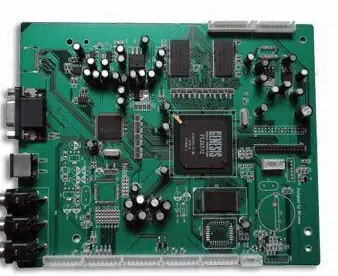Santa Cruz, California-A startup initiated by Carnegie Mellon University (CMU) researchers is preparing CircuitSpace, a printed circuit board "synthesis" tool that claims to be the first to place user-assisted automation components on Tools for PCB designers. By doing so, DesignAdvance Systems claims that it can reduce PCB design time by as much as 50%.
DesignAdvance (Pittsburgh, Pennsylvania) announced that it has formed an alpha test program with four partners and will launch CircuitSpace at the PCB Design Conference on March 7, 2005. Partners include Compunetix Inc., EMA Design Automation, Laurel Networks and Marconi Corp.
CircuitSpace allows designers to specify constraints, design rule checking (DRC) and electrical rule checking (ERC). It provides automatic and interactive constraint-driven component placement, automatic bypass capacitor allocation, channel or port duplication, automatic clustering of key components and supporting circuits, and design reuse of module libraries.
The optimization algorithm can consider multiple constraints, including signal propagation delay, fixed component relationship, component orientation, component symmetry, component height, thermal limitations, manufacturability, and electrical requirements.
Creating CircuitSpace, DesignAdvance developed two patented platform technologies at CMU, including five patents. The company has received US$2.4 million in research funding from commercial companies such as the National Science Foundation and United Technologies, General Motors, Ford and DaimlerChrysler.
Randy Eager, CEO and co-founder of DesignAdvance, received a license from an official of the CMU Technology Transfer Office. He previously worked at BASF and the electronic packaging startup TriTech Group, and served as a management consultant for five years.
The inventors of DesignAdvance technology include co-founders and chief scientists Jay McCormack and Chandan Aladahalli, both of whom are recent CMU PhDs. Co-founder and chief technologist Jonathan Cagan is a professor of mechanical engineering at CMU.
How to reverse the schematic diagram of the PCB board

In the research of PCB reverse technology, the reverse push principle diagram refers to the reverse push out of the PCB document diagram or the direct drawing of the PCB circuit diagram according to the actual product, which aims to explain the principle and working conditions of the PCB board. And, this circuit diagram is also used to analyze the functional characteristics of the product itself. In the forward design, the general product development must first carry out the schematic design, and then carry out the PCB design according to the schematic.
Whether it is used to analyze circuit board principles and product operating characteristics in reverse research, or is reused as the basis and basis of PCB design in forward design, PCB schematics have a special role. So, how to reverse the PCB schematic diagram based on the file diagram or the actual object, and what details should be paid attention to during the reverse calculation process?
1. Reasonably divide functional areas
When performing the reverse design of the schematic diagram of a good PCB circuit board, a reasonable division of functional areas can help engineers reduce some unnecessary troubles and improve the efficiency of drawing. Generally speaking, components with the same function on a PCB board are arranged in a concentrated manner, and the division of areas by function can have a convenient and accurate basis when inverting the schematic diagram.
However, the division of this functional area is not arbitrary. It requires engineers to have a certain understanding of electronic circuit related knowledge. First, find the core component in a certain functional unit, and then according to the wiring connection, you can find other components of the same functional unit along the way to form a functional partition. The formation of functional partitions is the basis of schematic drawing. In addition, in this process, don't forget to use the serial numbers of the components on the circuit board cleverly, they can help you partition the functions faster.
2. Find the right reference parts
This reference part can also be said to be the main component PCB network city used at the beginning of the schematic drawing. After the reference part is determined, the reference part is drawn according to the pins of these reference parts, which can ensure the accuracy of the schematic diagram to a greater extent. sex.
For engineers, the determination of reference parts is not a very complicated matter. Under normal circumstances, the components that play a major role in the circuit can be selected as reference parts. They are generally larger in size and have more pins, which is convenient for drawing. Such as integrated circuits, transformers, transistors, etc., can all be used as suitable reference components.